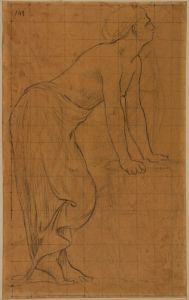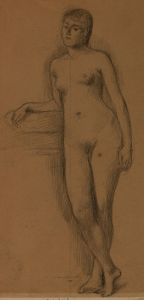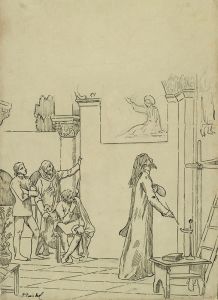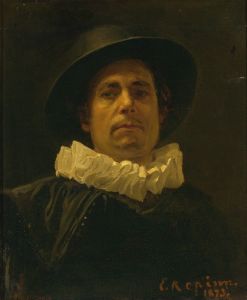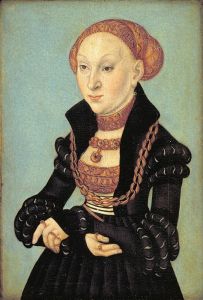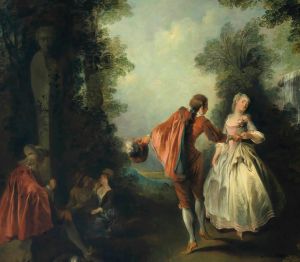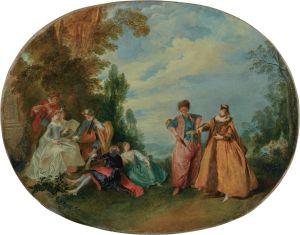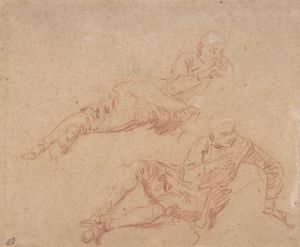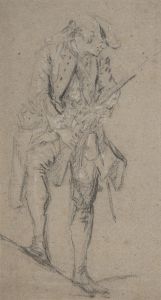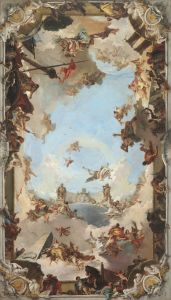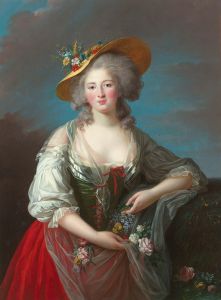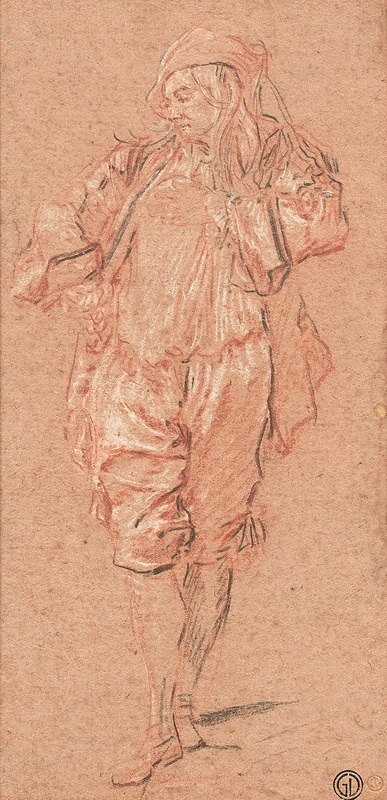
Etude de personnage en pied
A hand-painted replica of Nicolas Lancret’s masterpiece Etude de personnage en pied, meticulously crafted by professional artists to capture the true essence of the original. Each piece is created with museum-quality canvas and rare mineral pigments, carefully painted by experienced artists with delicate brushstrokes and rich, layered colors to perfectly recreate the texture of the original artwork. Unlike machine-printed reproductions, this hand-painted version brings the painting to life, infused with the artist’s emotions and skill in every stroke. Whether for personal collection or home decoration, it instantly elevates the artistic atmosphere of any space.
Nicolas Lancret was a prominent French painter known for his contributions to the Rococo style, which flourished in the early 18th century. His works often depicted scenes of elegant society life, capturing the playful and light-hearted spirit of the time. One of his notable works is "Etude de personnage en pied," which translates to "Study of a Full-Length Figure."
"Etude de personnage en pied" is a study that showcases Lancret's skill in capturing the human form and his attention to detail in clothing and posture. While specific details about this particular painting are scarce, it is consistent with Lancret's broader oeuvre, which often included genre scenes and studies of figures in various poses and settings.
Lancret was a contemporary of Antoine Watteau, another master of the Rococo style, and was influenced by Watteau's approach to painting. Like Watteau, Lancret's works often featured themes of leisure and entertainment, set in idyllic landscapes or elegant interiors. His paintings were characterized by their delicate brushwork, vibrant colors, and the graceful depiction of figures.
Born in Paris in 1690, Lancret was initially trained under Pierre d'Ulin and later studied with Claude Gillot, who was also Watteau's teacher. Lancret's talent was recognized early in his career, and he was admitted to the Académie Royale de Peinture et de Sculpture in 1719. Throughout his career, Lancret enjoyed considerable success and was a favorite among art patrons of the time, including members of the French aristocracy.
"Etude de personnage en pied" likely served as a preparatory study for a larger composition or as an independent work showcasing Lancret's ability to render the human figure with elegance and precision. Such studies were common practice among artists of the period, allowing them to experiment with poses, clothing, and expressions before committing to a final composition.
Lancret's work is often celebrated for its ability to capture the essence of the Rococo period, with its emphasis on beauty, pleasure, and the ephemeral nature of life. His paintings provide a window into the social customs and fashions of 18th-century France, reflecting the tastes and interests of the time.
Despite his success during his lifetime, Lancret's reputation waned in the years following his death in 1743, as tastes shifted towards the Neoclassical style. However, his work has since been re-evaluated and appreciated for its contribution to the Rococo movement and its influence on subsequent generations of artists.
Today, Lancret's paintings, including studies like "Etude de personnage en pied," are held in various museums and private collections around the world. They continue to be studied and admired for their technical skill, charm, and insight into the cultural milieu of 18th-century France. While specific information about "Etude de personnage en pied" may be limited, it remains an important part of Lancret's artistic legacy and a testament to his enduring influence in the world of art.





